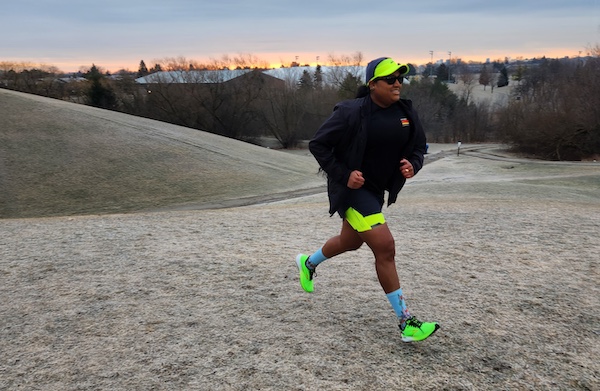CBD Recovery and iRun MediPharm Labs Toronto Event on April 20 for Runners
Keith Strachan is training for his first half marathon in Barrie, Ontario in June. On the cusp of his 40th birthday, Strachan goes to the gym three times a week, runs a publicly traded company and uses CBD as part of his work-life balance.
“CBD is something I use to destress and relax,” says Strachan, whose MediPharm Labs makes a variety of pharmacy-quality CBD products, including CBD50 oil, Relax Wildberry soft chews and CBD Olive Oil formula. “I find CBD a calming product for the same reason I like to stay physically fit as a busy business professional—our product helps you unwind and destress; plus, sleep is a huge part of my recovery.”
CBD—cannabidiol as it’s officially known—is regulated differently in Canada than the United States, where cannabis is illegal federally. In the US, Americans are able to purchase CBD products on Amazon, at WholeFoods and in health clubs and gyms.
 In Canada, however, where cannabis was made legal on October 17, 2018, CBD is only sold at licensed cannabis dispensaries—the same locations where Canadians purchase joints and products with THC. Many CBD products made from MediPharm Labs do not contain THC and do not need to be smoked for their effects to take action. Olympian Lanni Marchant told a group of runners last year in Ottawa (pictured above, with Ben Kaplan at Superette) that CBD saved her life and Keith Strachan believes the CBD laws in Canada will change over time.
In Canada, however, where cannabis was made legal on October 17, 2018, CBD is only sold at licensed cannabis dispensaries—the same locations where Canadians purchase joints and products with THC. Many CBD products made from MediPharm Labs do not contain THC and do not need to be smoked for their effects to take action. Olympian Lanni Marchant told a group of runners last year in Ottawa (pictured above, with Ben Kaplan at Superette) that CBD saved her life and Keith Strachan believes the CBD laws in Canada will change over time.
“CBD belongs alongside natural health products and vitamins and will ultimately be distributed wherever you buy health supplements, like Costco,” says Strachan, adding that after he finishes his June half marathon, his next big goal is the marathon. “We’re hearing anecdotally and studying data that says more consumers—and more runners—are taking CBD products as part of their overall health regime,” Strachan says. “We’re looking forward to the day that we know is coming when we can reduce the stigma surrounding CBD products, and see them available at Loblaws, Shoppers Drug Mart and any grocery or pharmacy.”

In an effort to share information about his products with the running community, MediPharm Labs and iRun are co-hosting an event in Toronto on 420—April 20 at 4:20 p.m.—to inform the running community about CBD. I personally have used CBD since cannabis legalization and in particular I found the MediPharm Labs CBN 1:2 Nighttime oil a lifesaver during a difficult personal moment. I’ll be leading a talk from Miss Jones Cannabis Outpost at 170 Fort York Boulevard before our event and Strachan and his team will have product and answer questions as we bring together the running community with experienced CBD experts.
It’s a personal passion project for both Strachan and myself: we both believe CBD can help runners achieve their goals and live happier lives.
“MediPharm Labs makes pharmaceutical-grade CBD products with accurate dosing and extremely high standards,” says Strachan. “There’s a stigma attached to CBD because of how it’s sold, but we’re seeing tremendous pickup with health-conscious consumers and I look forward to meeting as many runners as possible on April 20—plus, I need to sneak in a run.”
To RSVP for the April 20 event in Toronto, please click here. To buy MediPharm products directly and get more information, here’s a link to their site.




 Deciding to run Around the Bay felt empowering. I took a bus with friends from BlackToe to Hamilton from Toronto. I very carefully made my playlist extra sweet. It was only thirteen songs and I played them on repeat: Free Fallin’, I Won’t Back Down, Lost Together. You know the vibe: set your spirit free.
Deciding to run Around the Bay felt empowering. I took a bus with friends from BlackToe to Hamilton from Toronto. I very carefully made my playlist extra sweet. It was only thirteen songs and I played them on repeat: Free Fallin’, I Won’t Back Down, Lost Together. You know the vibe: set your spirit free.


































 Current Issue
Current Issue Previous Issue
Previous Issue Prior Release
Prior Release
